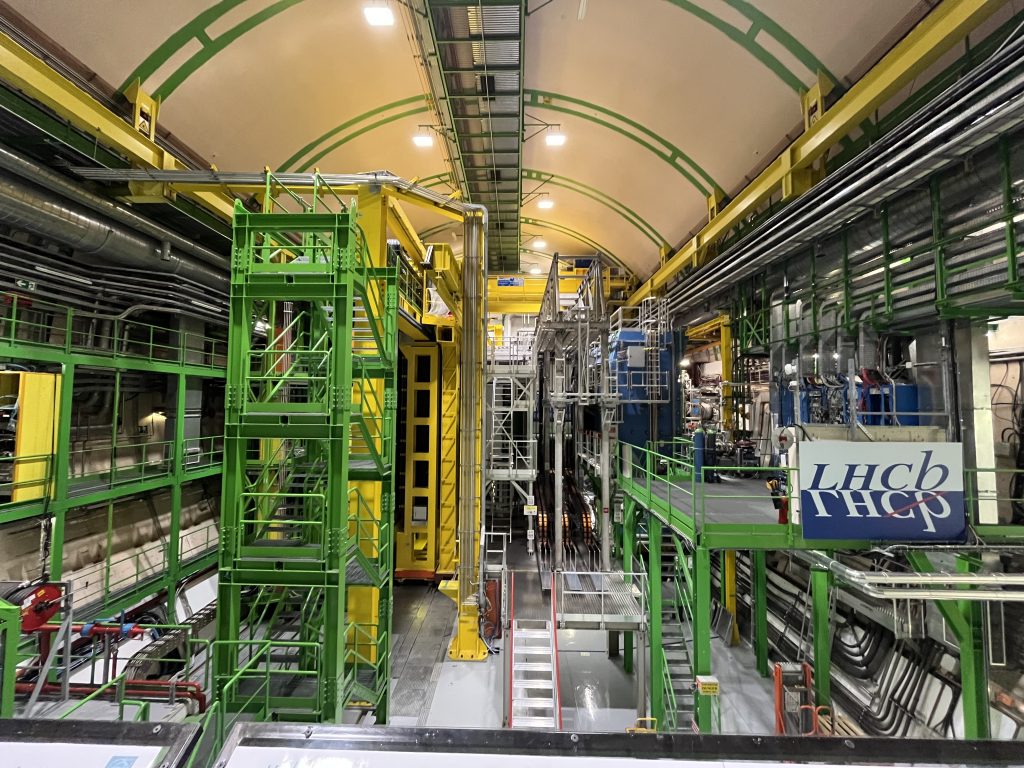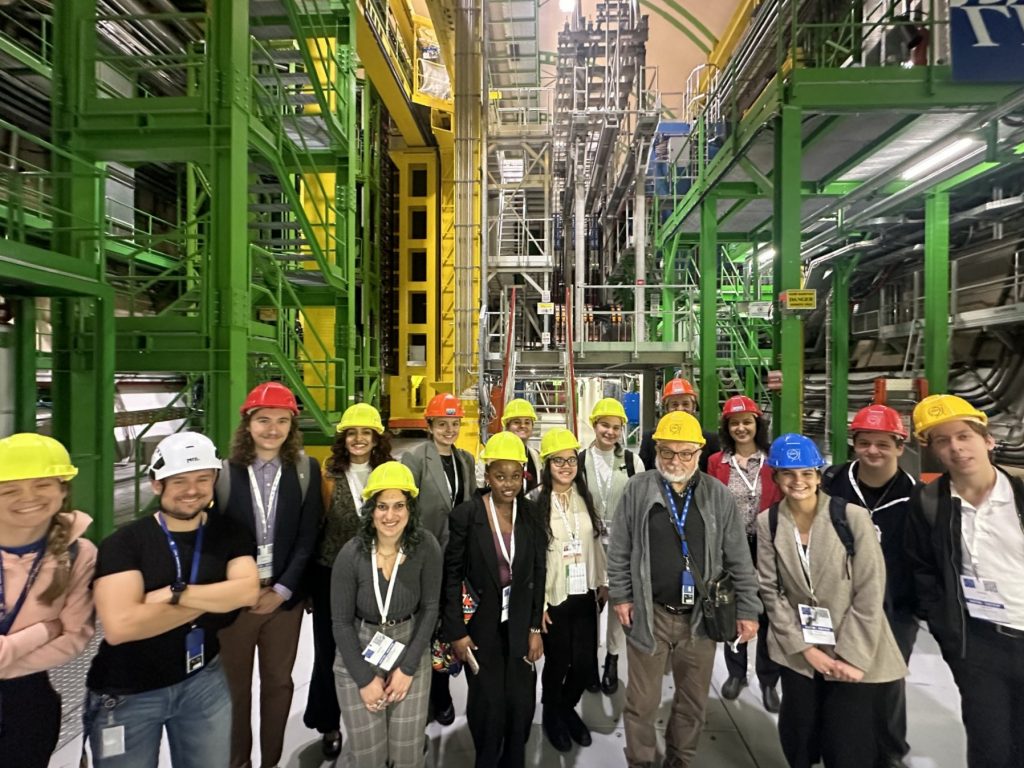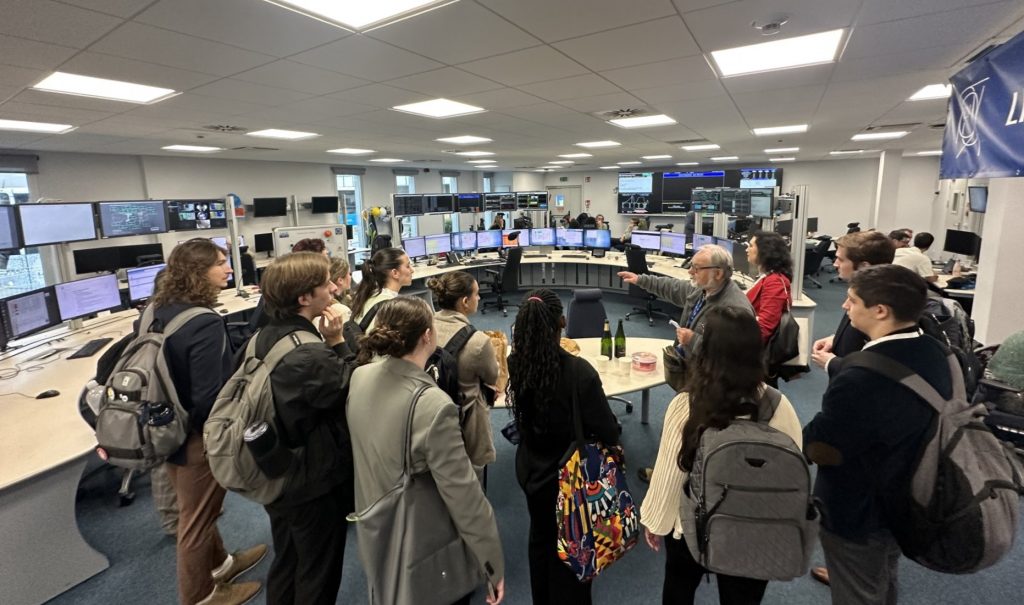by Cody VanNostrand on 10/31/2023
Hi everyone! We started our morning today with a brief break from the Minamata Convention and took trip to the end of the 18th tram line at the Switzerland-France border. This was a little place known as “Conseil Européen pour la Recherche Nucléaire” or the European Council for Nuclear Research.
In reality, CERN is neither little in size nor its impact to science. Though the CERN Science Gateway we arrived at was the size of a small college campus, most of us didn’t realize that the largest CERN particle accelerator, the Large Hadron Collider (LHC), actually covered a distance of 27 kilometers 100 meters below the surface! In the photo below, you can see the path that the LHC takes. Above the LHC in the image is Lake Geneva, where Geneva is the tiny gray and white patch to the right of the lake.

9 am:
After watching an informative video about CERN in one of the many administration buildings, we hopped onto a bus traversing the sunflower-grazed countryside, eventually arriving at CERN – Point 8. Seen in the image above as the tiny circle close to the Geneva airport, Point 8 is the home to one of the four experiements in the LHC, the LHC Beauty (LHCb) experiment. This experiment studies one of the 17 elementary particles in the Standard Model, the beauty quark, also know as the bottom quark. To detect the particles and the beauty quarks created during the collision of two beams of atoms, CERN scientists and engineers designed a series of subdetectors that work together in one large system called the LHCb Detector. Sitting at 21 meters long, 10 meters high, and 103.4 meters below ground, we were lucky enough to visit this feat of human ingenuity! The day before, on October 30th, CERN concluded its 2023 data-taking period with lead ion collisions, allowing them to safely open up their doors for our visit.
10 am:
After equiping a hard hat and a key pass, we boarded the 100 meter elevator to descend deep into Earth. At this level, the LHC is unable to recieve background radiation nor expose surface-dwellers to the intense gamma radiation created by the beam collisions. Passing through a series of tunnels, gates, and doors, we finally entered a huge bay that contained the LHCb Detector, the focal point of much particle research at CERN. After climbing the catwalks that surround the resting machine, our tour guide Dr. Bolek Bietrzyk discussed with us about how the LHCb experiment may help us learn more about antimatter. A photo of the LHCb Detector from today can be seen below!

Group photo!

After resurfacing, Dr. Bietrzyk took us on a quick tour of the LHCb Control Room, showing us how the many scientists and control panels work together to orchestrate the LHCb Detector and its many subsystems. A photo of our group is shown below.

11:30 am:
Finally, after passing through the LHCb Control Room, we took one last bus trip ending at the corner of Route Dirac and Route Lagarrigue, the location of the CERN Control Center. Here, Dr. Bietrzyk gave us a thorough explanation of the multiple paths particles may take along the CERN accelerator complex. His presentation showed the individual components that both accelerate the particle beam and control and measure its size and shape. On display below the screen were 1:1 replicas of some of these important components, such as the wire scanner, a mechanism that measures the cross-sectional distribution of the beam by passing a wire through it. The presentation may be seen below.

This presentation concluded our tour of CERN, and we stayed on CERN’s campus for lunch.
Being able to tour CERN and see the LHCb Detector in person was an amazing opportunity to witness one of the most influential scientific research centers on the planet. I was impressed by not only the technical feats of CERN and their willingness to display, share, and explain them, but the level of international collaboration and communication shown through their work.